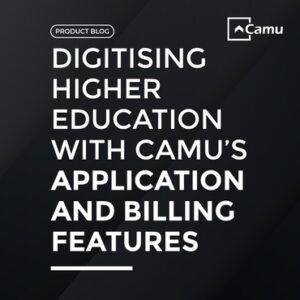
The Road to Becoming a Student-Centric and Learner-Centred Institution
Institutes of higher education were designed to guide students in their academic pursuits, helping them transition from the all-important phases of primary to secondary to tertiary.
Right from enrolment to graduation, educational stakeholders have played a key governing role in the student lifecycle.
But as student expectations change, in a world of smart and personalised EdTech, there is a growing urgency for institutes to become student-first or student-centric.
Simply put, to allow students to take complete ownership of their own journeys – academic, corporate and/or social.
This dramatic shift in mindset has forced colleges and universities to rethink their operational models, working towards building an ecosystem that “empowers rather than handholds”.
For institutions that are determined to survive and thrive in a hyper-competitive world, being learner-centred is crucial.
If you’re an institute looking to explore the building blocks of student-centrism, here’s what you must endeavour to accomplish.
Empower students to follow their own paths, based on individual goals
Give them agency over their path, and they’ll surely make you proud. The key is to help students unlock their goals and aspirations, hopes and dreams, passions and desires, independent of what parents or teachers envision for them. These ambitions could be long-term, for e.g., graduating with honours, securing a position in a high-ranking global firm, or starting a business venture. These could also be more short-term, for instance, course progression, extracurricular pursuits, philanthropy, or interpersonal skill building. The idea is to provide room for self-expression, enable freedom of voice and choice, encourage debate and discussion, as well as offer sufficient time to further develop thoughts and ideas.
Equip students to learn at their own pace, at a time and place of their choice
A one-size-fits-all approach to learning often falls short. After all, no two students are the same. Therefore, it’s important to acknowledge the varying personalities and traits, competencies and skills, learning curves, and potential barriers to learning. Forcing each candidate to conform to a predetermined structure, timetable, and classroom setting can be counterproductive. Instead, give them autonomy over their pace, place, and path. This is made possible in a blended or hybrid learning set-up, where students have access to flexible schedules, personalised curriculums, curated timetables, real-time updates, and feedback.
Embrace students from across the board
Support the entire spectrum of student profiles. Part-time, full-time, working professionals, urban, rural, international. By doing so, you’re making learning the priority. But remember, what works best for one group, may not necessarily work well for the other. For instance, working individuals will prefer evening classes, whereas rural students may find it difficult to access online classes. Acknowledge these differences, and create support systems. By adapting infrastructure and processes to suit different kinds of students, you are one step closer to building a truly inclusive, diverse and multicultural student body.
Encourage students to augment their allied skills through short courses
Providing opportunities to upskill not only helps students develop within their degrees, and progress within their careers, but transforms their mindsets. Design short courses in allied fields that will allow students to acquire new, niche skills e.g., digital literacy, cyber security, or data analytics. The main purpose of a short course is to complement one’s current set of skills. It expertly combines practical and hands-on skills with theoretical skills, thereby enabling students to learn about a specific industry in a very short period of time.
Educate students to choose the right courses and programmes
Education has come a long way from being a mere choice between Science, Commerce and Arts. Today, students can pick and choose from a plethora of subjects, courses, and programmes (online and offline) that cover niche areas e.g., Artificial Intelligence and Robotics. This is, of course, dependent on a student’s academic interests and career goals. Nevertheless, it’s important for an institute to guide students to make calculated and future-proof decisions.
Embed student-centricity into the institute’s DNA with Camu
Transforming into a student-centric and learner-centred institute is only made a reality with the right EdTech partner.
After all, this transformation requires a relook at every fundamental – infrastructure, environment, processes, tools, culture, and people.
Institutions may already have some infrastructure in place to aid in this evolution, however, a technology enabler such as Camu will help fill in the existing gaps.
More importantly, help create new work ideals that will benefit the student, as well as other stakeholders.
Camu is compatible with a choice-based credit system that offers the ultimate level of freedom, flexibility and personalisation via a fully automated course registration:
- Curriculum Design
- Study Plans
- Lecture Scheduling
- Advising
- Course Registrations and Course Withdrawals
- Academic Standings
- Deferment/Study Break
- Payments and Refunds.
The platform empowers students to curate their professional and personal growth by allowing them accountability, agency, onus and control over their journeys.
We’re living in a student’s world, after all.
Still, wondering if Camu is your ticket to a student-centric institute?
Well, we are eager and enthusiastic to help show you a smarter, student-friendlier way ahead.
One that will boost enrolment, retention, and graduation rates!







